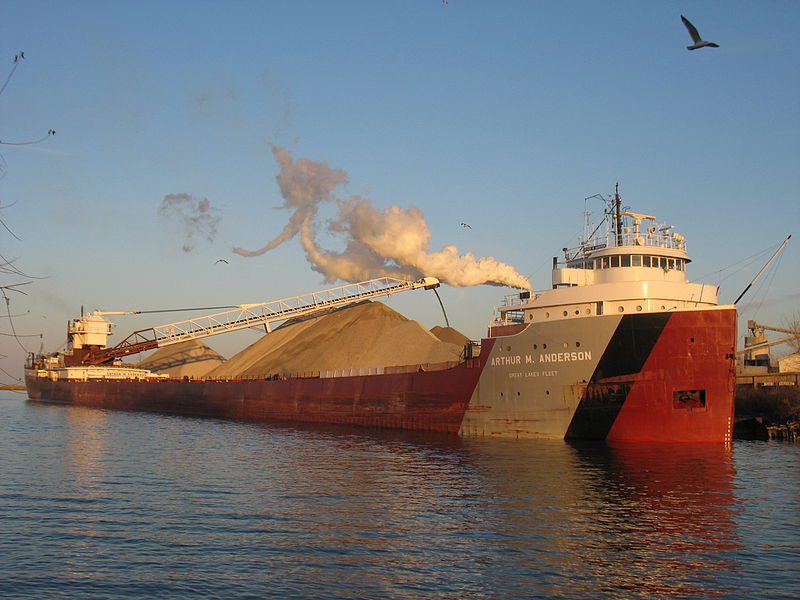File Photo: Creative Commons
Heavy ice blanketing the Great Lakes is continuing to wreak havoc on the region’s iron ore trade, highlighting the need for more robust icebreaking capabilities.
According to the Lake Carriers’ Association, shipments of iron ore on the Great Lakes and St. Lawrence Seaway totaled 4.3 million tons in April, nearly 15 percent below the month’s long-term average, because of ice cover extent.
The Lake Carriers’ Association, a trade association representing U.S-flagged carriers in the Great Lakes, says that now only is the ice slowing the vessels in service, it has delayed many vessels from even sailing. Several U.S.-flag vessel operators held back ships rather than sit in ice because the U.S. and Canadian Coast Guards do not have enough icebreakers to adequately cover the system, the Association says.
“April was again proof positive that we need more icebreaking resources,” said James H.I. Weakley, President of Lake Carriers’ Association. “Even though domestic steel production has been slowed by dumped foreign steel and global overcapacity, the mills and power plants needed to be resupplied after the winter closure. Unfortunately, extreme ice conditions, especially in Whitefish Bay at the eastern end of Lake Superior, forced many vessels to wait until convoys could be formed and led through the ice fields.”
This is the second year in a row a brutal winter has slowed early season shipments of iron ore and other cargos on the Lakes. In April 2014, shipments of iron ore totaled just 2.7 million tons, a staggering 53.3 percent below the month’s long-term average.
As a result, Rep. Candice Miller (R-MI) included a provision in the Coast Guard Authorization Act of 2015 (H.R. 1987) approved by the House Transportation and Infrastructure Committee that directs the U.S. Coast Guard to design and build a new, multi-mission icebreaker to enhance its capabilities on the Great Lakes.
“We thank Congresswoman Miller for recognizing the need for more U.S. Coast Guard icebreakers on the Great Lakes. This new icebreaker must be at least equal to the heavy icebreaking capabilities of the MACKINAW. We will be working with the entire Great Lakes delegation to ensure this provision remains in the final bill passed by the House and Senate.”
Through April 2015, the Lakes/Seaway ore trade stands at 8.2 million tons, a decrease of 16.5 percent compared to the long-term average. Loadings out of U.S. ports on Lake Superior and Lake Michigan are down more than 21 percent compared to their long-term average.
In 2014, the Lakes iron ore trade stood at 6.2 million tons through April, a decrease of nearly 43 percent compared to 2013 and the long-term average.

 Join The Club
Join The Club











